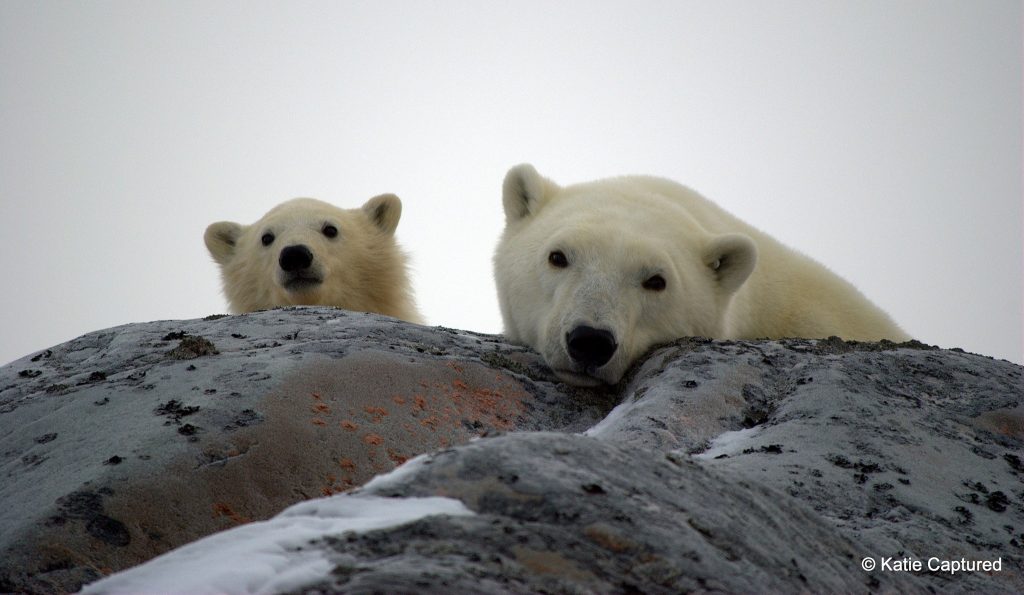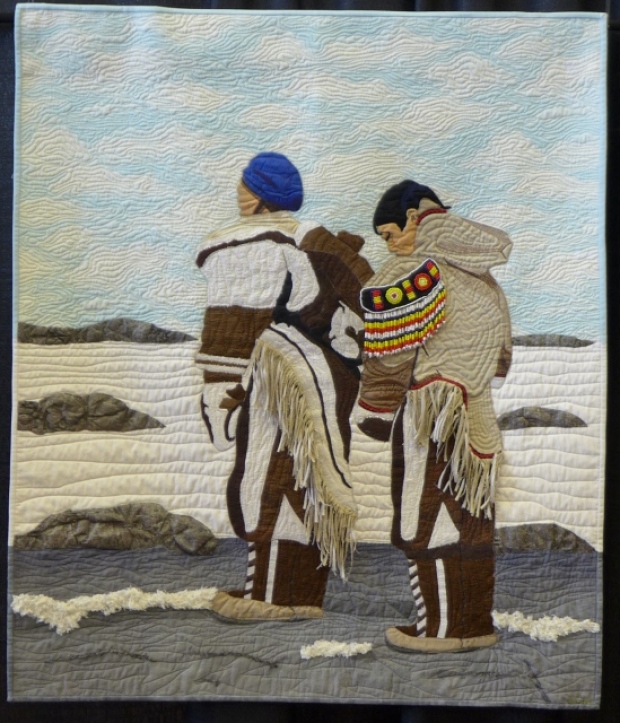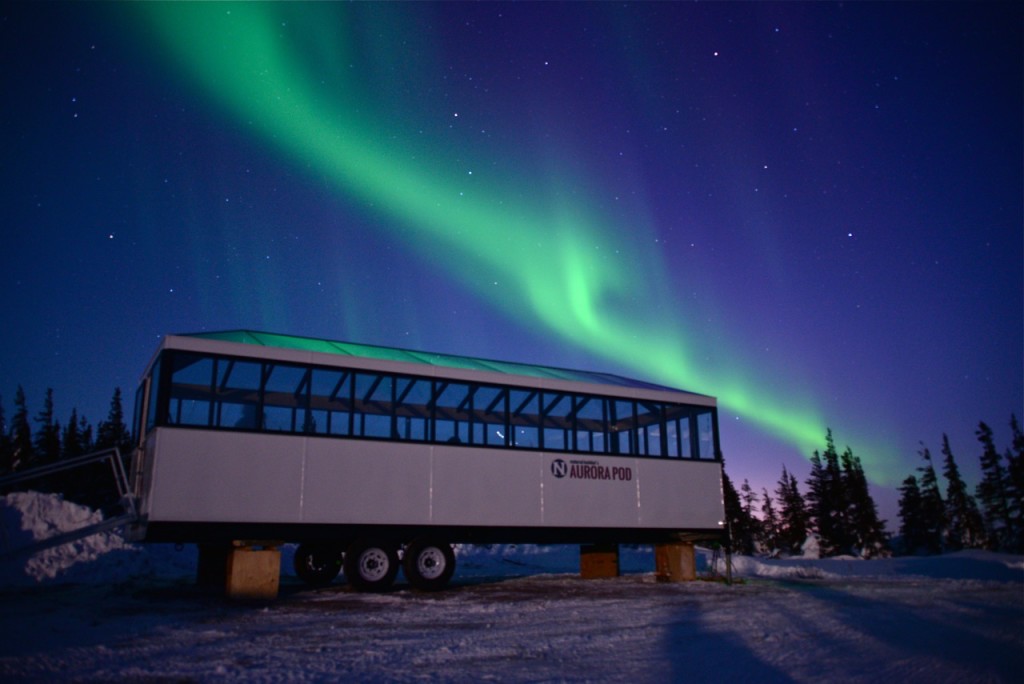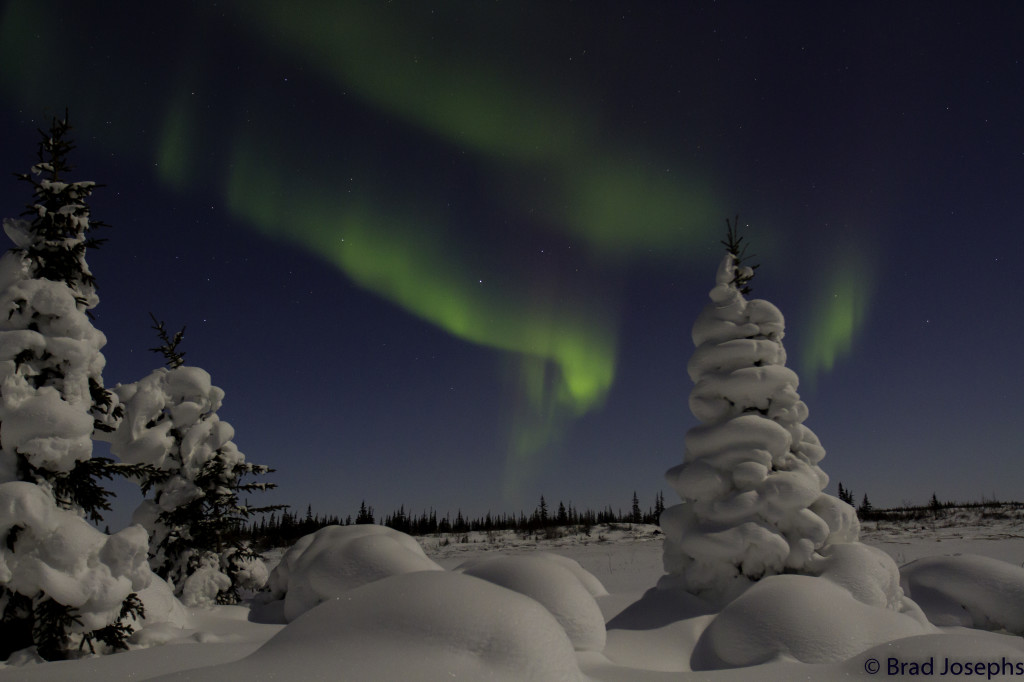by Steve Selden | Jun 6, 2018 | Tour News

Polar bear mother and cub taking a breather lying on the Precambrian shield in Churchill Katie de Meulles photo.
All signs point to a decline in polar bear numbers in the southeastern region of the Hudson Bay, namely Churchill. Without even looking at the most recent statistics, there have been telltale changes in bear behavior that signal a potential shift in the polar bear population in the region.
A recent in-depth survey of polar bears in the world’s most southerly range indicates numbers have dropped and climate change is possibly rearing its head on the most accessible region to see these majestic creatures, Churchill!
Lead researcher and primary author of scientific paper Martyn Obbard focused on the polar bears residing on the shores of the James Bay and Hudson Bay known as the southern Hudson Bay population. Obbard collaborated with scientists from governments of Nunavut, Quebec and Ontario as well as the United States.
“If this trend is real and if it continues, I think we happened to have caught it just as it started to go over a cliff,” said Martyn Obbard, lead author of the paper that appeared this week in the journal Arctic Science.
A 17per cent decrease in five years, from 943 to 780 in that region has the scientific community on high alert. However, the more alarming number is a decrease from 12 percent to 5 percent of yearlings from 2011 to 2018.
“Many adult females may still be producing litters, but they may be less successful in raising cubs,” says the paper.
Studies over the last few years have reported what we have been seeing on average. Polar bears are getting skinnier and smaller from an annual reduction in the number of days of accessible sea ice
Between 1980 and 2012, research shows the number of days spent on land rather than on sea ice increased by 30 days. This time period severely reduces the amount of seal fat intake and leads to lower survival rates particularly for yearlings and less experienced hunters.
While the last survey of Hudson Bay polar bears conducted in 2011 showed population numbers fairly stable and in line with the previous 25 years of observations, Obbard wanted to quell the debate on both sides regarding the population. The latest ariel survey was conducted with rigor and quite comparable to the 2011 survey.
Obbard, recently retired from the Ontario government, cautions that having only two data points is not a conclusive study, the drop off observed is troubling at least.
“We’ve tried to be not alarmist. But we’ve tried to point out there are serious concerns,” stated Obbard.
While the years have produced images of polar bears seemingly adapting better to more ice-free days through finding alternative food sources or hunting seals on land or in the coastal shallows, Obbard’s most recent study validates impending warnings from researchers who have maintained that polar bear numbers would shrink like the ice when seal hunting days were reduced.

Polar bears have seemed to adapt in recent years to less “ice time” by hunting closer to shore. Alex De Vries – Magnifico photo.
“If we have a decline in body condition, what comes next? Declines in survival then decline in reproductive success,” he said. “And what are the consequences of those? The individual-level effects become population-level effects — declines in survival rates and now declines in abundance.”
Past warnings have been similar to what Obbard sees now. Everything points to climate change as the main end cause of polar bear body deterioration. The pure fact that sea ice has been reduced year over year cannot be ignored.
“It is disheartening,” Obbard states.
Another intensive survey should be scheduled for 2021 to further find an accurate baseline for the western and southern Hudson Bay populations according to Obbard.
by Steve Selden | Feb 13, 2018 | Churchill News

Veronica Puskas’ quilt Pillars of Strength. Canadian Quilters’ Association photo.
Veronica Puskas, a former resident of Nunavut’s Kivalliq region, recently won an award for Excellence in Work by a first-time exhibitor Quilt in St. Catharines, Ont. at Canada’s national juried show.
Pillars of Strength, is based on a 1950 photograph of her grandmother and mother near the Meliadine River by Rankin Inlet.
The quilt honors her grandmother, Puskas says, though making it also helped her to deal with some heavy emotions.

Veronica Puskas uses Nunavut and the north as inspiration for her quilts and art. Veronica Puskas photo.
“I hope to encourage people that are going through difficult times that through doing some artwork or doing something to make something beautiful is very cathartic,” she says. “It helps you deal with the emotions and the hurt while doing it.”
Puskas says the project, which she began years ago and selected from over 80 entries, was truly a labor of love and family tribute.
“Mom used to tell us you can do better than that and that’s all I kept hearing.”
Chair of the event, Marilyn Michelin,says Puskas’ skill is outstanding.
“To do people in a picture is just unbelievable,” she says. “The talent that people have for that.”
Puskas, who now lives in Niagara-on-the-Lake, Ontario, will continue to use the north and particularly Nunavut as her inspiration for future quilting projects.
by Steve Selden | Mar 31, 2015 | Churchill News
I recently ventured back to Churchill, Manitoba for a week to help with set-up and installation of Natural Habitat’s new Aurora Pod. The project was finally nearing the end of a long process of design, production and delays and now came the time to test it all out. The time to see if all the work was worth the effort.

Natural Habitat’s Aurora Pod. Brad Josephs photo.
Upon arriving in Churchill and driving out to the proposed pod-site, just above the rock quarry across from the airport along the Hudson Bay coast, I knew immediately this was the place for the pod. Not a doubt.
The stillness in the frigid air froze me in my tracks as I stood just above the quarry and looked over the solid ice – packed Hudson Bay. The endless slab of ice extended north as far as I could see. To the east the Canadian shield rolled down to the edge of the rocky coast peaking through the snow where wind had whipped it clean. Stunted spruce with one – sided branches dotted the surface across the tundra and rock covered surface.

Northern lights above the boreal forest behind the Aurora Pod in Churchill. Justin Gibson photo.
Behind the pod and extending quite a distance to the west along the upland coast was a sturdy stretch of boreal forest holding fast like a battalion of soldiers guarding the bay. On my last day in Churchill I borrowed a friend’s snowshoes and made my way through the powder encrusted spruce pillars and found a wonder world of snowy silence. I worked my way through the heavy snow and came across fairly fresh wolf tracks winding their way back towards the quarry and westward along the coast. As I followed them with trepidation, I had the thrill of hoping to see the maker of these tracks and fear of doing so all at once. Eventually I turned back and left them as they disappeared over the snow covered rocky edge.
I stood one more time taking in the entire scene of boreal forest, rocky Precambrian shield and vast ice covered Hudson Bay all under a clear blue sky. As my nose hairs froze for a last time, I soaked it all in with pure pleasure. The sensation was incredible…one in all the years of working in Churchill I seemed to take for granted after some time.

Snow encrusted trees near the Aurora Pod. Brad Josephs photo.
A couple of days earlier I had joined photographer and former operator/ owner of Sea North whale watching tours Mike Macri on a ski – do trip across the frozen Churchill River to make a last visit to his rustic cabin. Hidden in the woods, just up river and about halfway between Churchill River and Button Bay, the journey was beautiful. Mike’s selling his last couple of pieces of property and heading east to Ontario with his wife to fish and retire to some extent. It was a great way to say goodbye to one of the last pieces of the original Churchill puzzle. As we sat in the cabin warming our toes by the wood stove, eating cookies warmed by the same fire and drinking hot tea, few words were spoken. Sometimes silence says it all. Old friends saying goodbye…though hopefully not forever.
After I returned home I realized that I had taken a trip back, not only physically but consciously, to a place where I have spent a substantial part of my life. Sitting around the “local” table in Gypsy’s restaurant listening to the stories and dialogues between people I remember from long ago reminded me why I fell in love with this place to begin with. Churchillian’s speak their mind ( sometimes with some pretty flowery language) and are very real. Those qualities separate places from the vast majority of towns in the world today.
Come find your inner spirit in the incredible natural beauty of the Churchill region!








